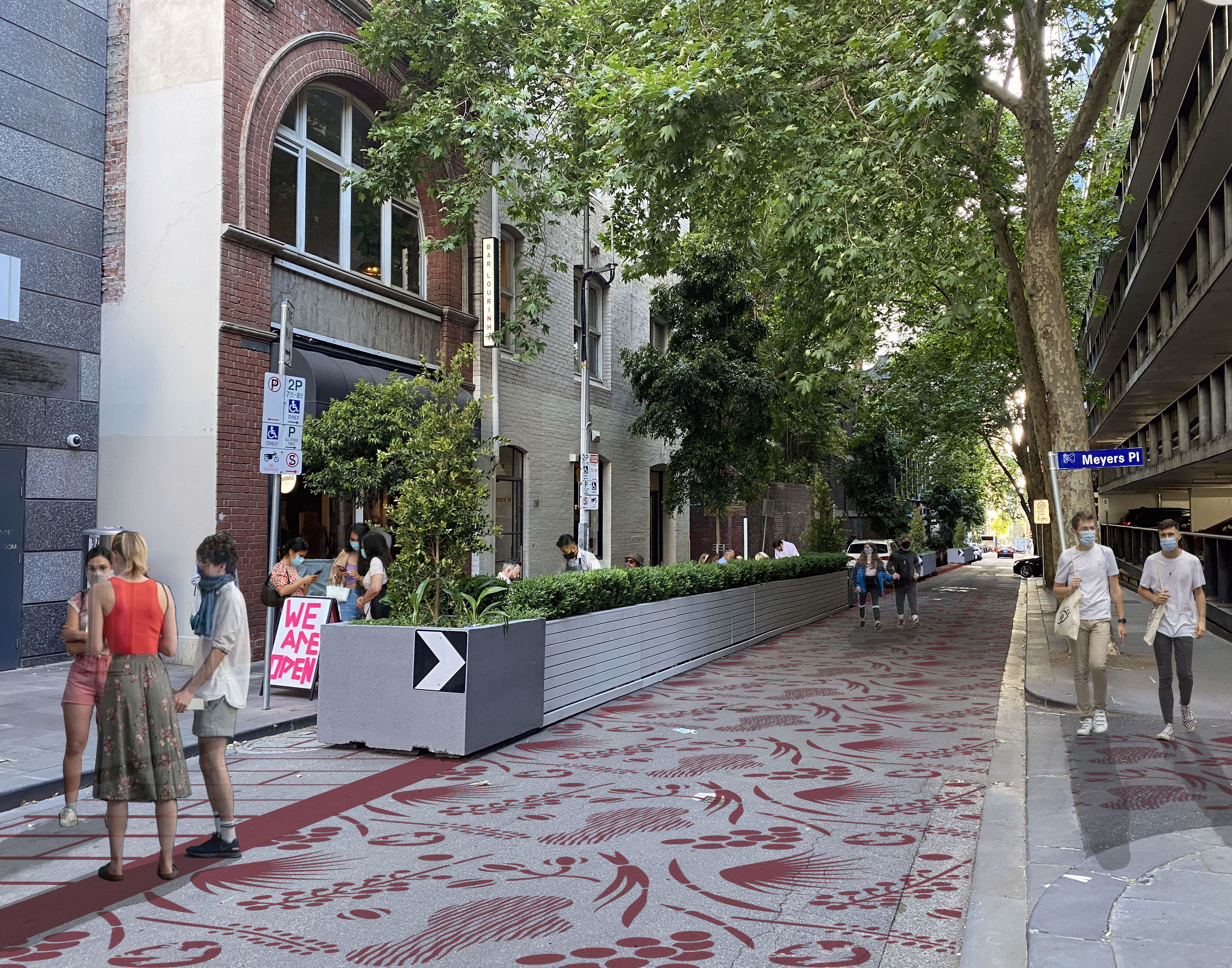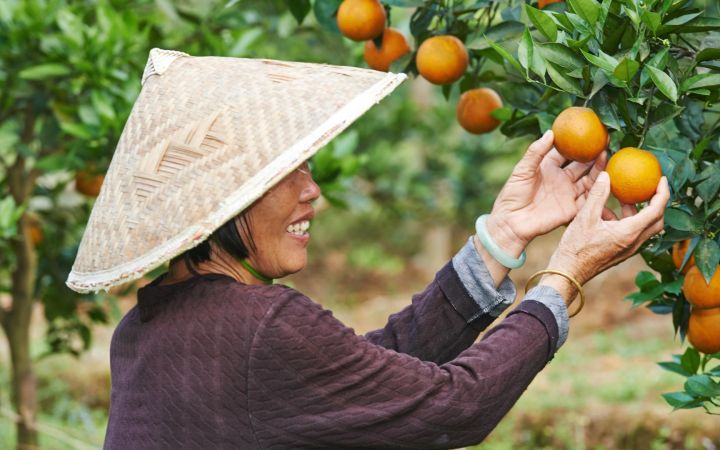Melbourne’s Little Streets will feature stencils showing local indigenous flora and fauna as part of an initiative to designate more space for pedestrians, while creating attractions to entice workers and visitors back to the city.
The designs will be introduced in key locations across 17 blocks in Flinders Lane, Little Collins Street, Little Bourke Street and Little Lonsdale Street from late-December.
Little Collins Street will be the first street to feature the designs with works commencing before Christmas.
Each street will feature an overall theme – herbs for Flinders Lane, grasses for Little Collins, shrubs for Little Bourke and trees for Little Lonsdale – with each block featuring individual flora and fauna details.
Different colours will be used to reflect the vegetation classes that existed in each area prior to European settlement. The colour palette will feature purple in the west, pink in the middle and deep red in the east.
Indigenous graphic designer, Marcus Lee, designed the stencils to reflect Melbourne’s pre-colonial landscape. Born and raised in Darwin and based in Melbourne, Marcus Lee is a descendant of the Karajarri people and has incorporated themes of cultural diversity into his work over his 30-year career.
The pedestrian-friendly measures are part of a suite of capital works projects designed to reactivate the city, improve safety and provide more space for social distancing.
This includes:
- Speed limits of 20 kilometres per hour in the Little Streets
- Traffic-slowing measures such as speed bumps and planter boxes
- Shared zone signage to make it safer for people walking around the city.
The project is being delivered as part of the $100 million Melbourne City Recovery Fund in partnership with the Victorian Government.
As stated by Lord Mayor Sally Capp:
“Bitumen will be transformed into a canvas with colourful patterns showcasing river red gum blossoms, fairy wrens, tea trees, native bees and butterflies.
“This project demonstrates our commitment to proudly showcasing our city’s Aboriginal history and we believe it will become an attraction in its own right.
“The patterns will signal to drivers and cyclists that pedestrians have priority, particularly in busy locations around shops, cafes and restaurants.
“The stencils are a simple and effective way to make sure people can safely move around our city and access businesses on our Little Streets more safely.
“Along with the new planter boxes and outdoor dining, the stencils are another example of the City of Melbourne delivering a safer and more vibrant city.”
As stated by Marcus Lee:
“Creating this artwork pattern provided an incredible opportunity to gain an insight into the natural environment of the Indigenous flora and fauna that existed in these local areas.
“In pre-colonial times, traditional Aboriginal cultural practices would have effectively utilised these varying woodlands to provide an abundance of food sources and resources.
“In depicting the nature of these vegetation classes, my approach to the design integrated elements of their unique characteristics while also balancing a simplified and bold style to enable the patterns to transfer effectively to the amazing Little Streets of Melbourne.
“Incidental mammals, birds, insects and amphibians also add a sense of habitat and discovery for visitors connecting to the city.”









